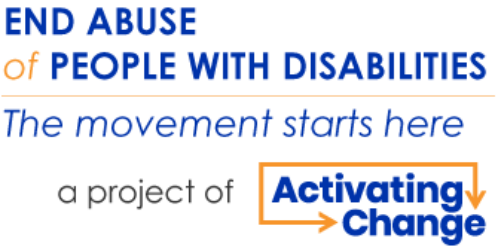Language Access Planning for Deaf People: A Toolkit
Research on victimization within the Deaf community suggests that Deaf individuals living in the United States have higher rates of domestic and sexual victimization than their hearing counterparts. Despite these higher rates of domestic and sexual violence, Deaf survivors face barriers that prevent them from getting help. When Deaf survivors reach out for services and support and their needs are not met, their experience of trauma is compounded by the very systems and services that are intended to help. Communication and cultural barriers are built into these systems because they were not designed specifically to meet the needs of Deaf victims and survivors.
This site contains links to various resources that have been developed to provide victim service providers and allied professionals with a process and practical strategies to remove barriers that prevent Deaf victims and survivors from accessing services and create more accessible and culturally responsive services. These resources will aid organizations in their planning for language access for Deaf people. Integrating language access throughout all aspects of your organization is essential for ensuring your organization can effectively serve Deaf survivors, victims, family members, and other people impacted by violence.
The Fundamentals of Language Access Webinar
The Fundamentals of Language Access Webinar Slideshow
- PowerPoint in English (PDF)
Working With Deaf Survivors Webinar
Working With Deaf Survivors Webinar Slideshow
- PowerPoint in English (PDF)
Working With Sign Language Interpreters Webinar
PDF Resources
- Developing A Language Access Plan to Serve Deaf Survivors
A comprehensive resource including an explanation on why language access planning is vital for serving Deaf survivors, the common barriers Deaf survivors face in accessing victim services, and a road map to help you effectively write a language access plan tailored to your organization.
- Budget for Sign Language Interpreters Tip Sheet
This tip sheet offers key considerations that will guide you in how to effectively determine your budget for interpreters.
- How to Meet Sign Language Interpreting Needs for Deaf Survivors
How to This graphic can help you decide when to use on-demand video remote interpreting service, virtual interpreters, or in-person interpreters.
- How to Find Qualified Interpreters Tip Sheet
This tip sheet lists key questions to ask sign language interpreting agencies that will help you find qualified interpreters to work with your organization and the Deaf survivors you serve.
- How to Determine if an Interpreter is Qualified Tip Sheet
This tip sheet lists key questions to ask sign language interpreting agencies that will help you find qualified interpreters to work with your organization and the Deaf survivors you serve.
- Fillable Language Access Plan Template
This is a fillable template to effectively plan language access for Deaf survivors and their families.
Online Resource
-
Interpreter Screening Guide created by HEAL of Tri-County
To learn more about culturally responsive and trauma-informed interpreters, please review the Interpreter Screening Guide created by our partners at HEAL of Tri-County. HEAL of Tri-County has developed an Interpreter Screening Guide to aid victim service agencies in assessing the capabilities of interpreters they use for d/Deaf survivor services.
